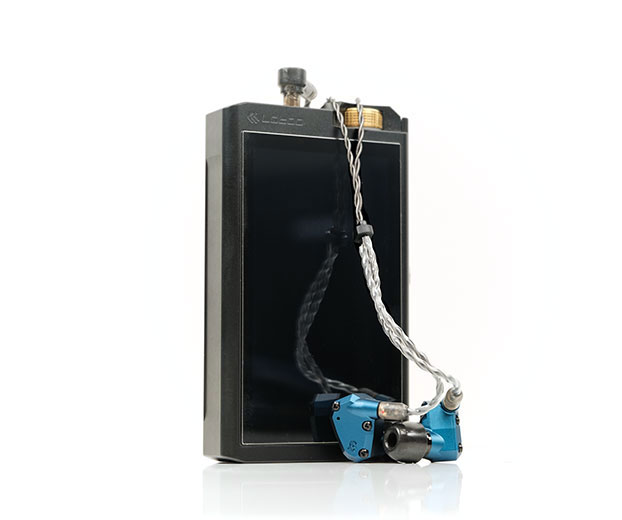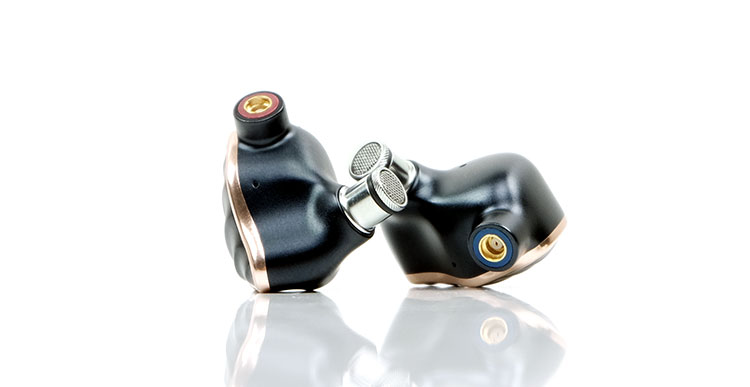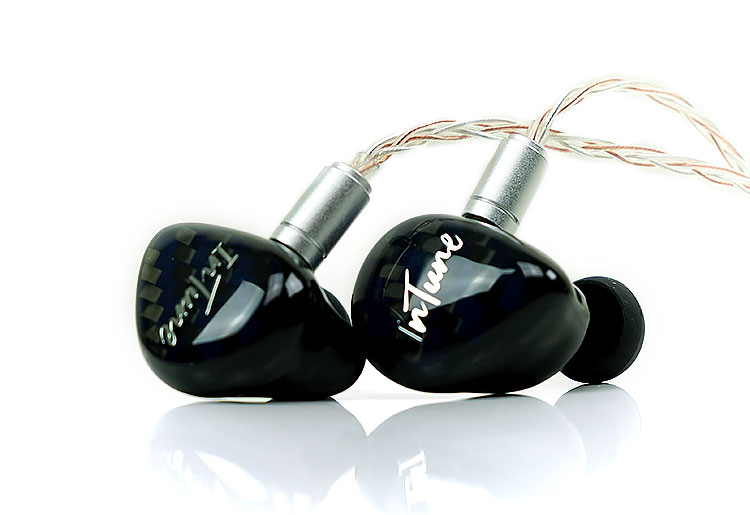Sound Impressions
Summary
If the original Polaris was slightly on the fence in terms of being a V or W-shaped presentation then the Polaris 2 is a bolder, more decisive coloration. A coloration that is much more V-shaped than the original and one that delivers even more bass-treble contrast than before.
As such, you could argue that the Polaris 2 has become a little more “niche” in its tuning than the original but at the same time, this revision provides a very clear difference in sound to the likes of the IO which came out at the same time. In summary, if the bass was not enough on the first Polaris, then wait to get you ‘get a load’ of this one.
And what is that niche? Well, if ever an IEM was perfectly crafted for synergy with a particular genre or two then the Polaris 2 is it. You might miss the magic of this monitor with anything ‘midrangey’, anything male vocal focused or using an instrumental sequence fixed squarely on the lower mids.
Once you slip on some synth-wave, modern-mixed R’n’B and something more female vocal focused then the Polaris 2 tuning is right on the money. If you can combine a few of those sounds together, think The Chainsmokers or a darker sounding Code Elektro, then this is where the magic of the Polaris 2 shines. A fun-sounding presentation is too crude of a statement, perfect for fun-sounding dancefloor music? Absolutely.
Staging
The Polaris 2 is deeper and taller than it is wide. It does present what I like to call a “fairly grand stage” because of that classic V-Shape lower-mids dip which can push back instruments behind higher-pitching vocals. This skews the stage creating a perception of distance to the listener from front to back rather than far out wide.
The T.E.A.C-infused BA design for the highs is excellent in terms of air and headroom. It is not so much that they have pushed the very top-end to the absolute limit, CA has tuned the Polaris 2 to deliver enough headroom without pushing the treble so far forward it starts to fatigue.
You will find a little less air and separation in the lower-mids and vocal positioning, particularly male vocals, which struggle to be heard above the powerful low-end. However, CA has bumped the FR from about 1-2k onwards so female vocals are much further forward and vivid sounding in the Polaris 2 staging.
Bass
One half of the high-contrast show that is the Polaris 2 and certainly one of the major talking points. The original Polaris had elevation and a typical natural level of decay you come to expect from a dynamic driver.
This new driver is physically bigger, sounds bigger, and definitely tuned with more sub-bass presence than the original. You will hear more body well below 100Hz and along with the upper-mids and treble sparkle is the most forward aspect of the Polaris 2 presentation.
It is also marginally punchier sounding than the first Polaris so there is some elevation in the mid-bass but I suspect it’s more L-shaped in its drop to the lower mids so not quite as forward sounding.
The rate of decay is slow as you would expect from a dynamic driver which makes it perfect for that slower modern R’n’B BPM. Synth-infused bass rhythms in the range of 90 bpm or lower will be lapped up by this low-end performance sounding “phat” and powerful at the same time.
Mids
The cut to the lower mids is fairly steep and that’s where you will find the biggest dip in the FR to prevent a huge amount of bleed from creeping in to the mix and congesting what is a slightly narrow midrange, to begin with.
I always have preferred a V-shape that takes this type of approach to something like the IE800’s dip which is further up around 2-4k. That tends to dull the sound and push back a lot of high-pitched vocals and percussion, something which the Polaris deftly avoids.
As such lower-mid instrumentals do not have a huge amount of separation and vocals pitching lower, mainly rock or metal guttural vocals tend to fall back into the layering with slightly less air.
This is not the forte for the new Polaris 2 tuning for me. If you absolutely need that lower-mids spacing and presence for male vocals stick with the original Polaris which is a bit more open sounding and rock-friendly.
The instrumental timbre does get a fairly hefty bass fundamental and a nice odd-harmonic crispness so the PRaT is strong but less so in terms of sustain and richness which is where the original Polaris is a bit more suited. The Polaris 2 mids tuning endears itself to tracks with very little in terms of guitar work, minimalist drum patterns if you need loads of room for vocals to be heard.
Female Vocals
Female vocals, (or male soprano), on the other hand, benefit massively from a lift from around 2k onwards sounding much more vivid and captivating. Modern EDM is often heavily driven by soulful female diva-like vocals and this is where the Polaris 2 is particularly strong at teasing out.
I am particularly keen to point out that the harmonic balance on the majority of female vocal performances with the Polaris 2 is excellent. Clean certainly, but never overtly sharp or fatiguing. Percussion timbre follows a similar pattern sounding energetic and forward but lacking in irritating splashiness.
Treble
This is not an overly bright tuning, not at all. The critical takeaway is the level of contrast with the low-end. As much as the low-end is lifted, full-sounding, and forward in the Polaris 2 tuning so too is the treble elevation.
However, it is not to the point where it becomes peaky or shrill and it does a very nice job of ensuring instrumental timbre is not too soft and even-harmonic biased. I suspect some of that comes from that drier BA style of delivery is preventing percussion timbre from lingering longer than it has to.
Definitely, there is energy in the Polaris 2 top-end, much more so than the original Polaris. However, it is finely balanced with more than enough air and headroom to allow that excellent female vocal to breathe without everything above sounding like it’s crashing down on top of them.
Matchability
Efficiency
The Polaris 2 is more efficient than the original Polaris. The original Polaris is rated at 16.8Ω and 97.5 dB SPL which is a bit lower for sensitivity compared to the 17Ω and 105dB of the new Polaris. It is fairly easy to drive though not as efficient as the Andromeda or Solaris for that matter.
Mind you, in our testing with some decently powered DAPs such as the Cayin N6ii and the Lotoo PAW Gold Touch we found that 105dB rating to be a little conservative. This is quite often the case with CA monitors as they can often be much more sensitive than their paper ratings.
For example, the FH7 from FiiO is rated at 16Ω and 111dB but we found that it needed a little more juice on both of our test DAPs by around 2-4 steps in a low gain unbalanced output setting. The same was also true when compared with iBasso’s IT04 which is also a bit more efficient on paper at 16Ω and 110dB SPL.
Noise
Whilst the Polaris 2 is possibly more susceptible to picking up higher noise floors as it is more sensitive than the original Polaris, in practice both are dead quiet with the 3 DAPs we tested it on.
These DAPs included the HiBy R6 Pro which can throw out a little hiss with the likes of the Andromeda and Solaris. Not so with the Polaris 2 which remained dead quiet. The PAW Gold Touch was a perfect black background and the N6ii was a very low noise flor experience also.
The only time when I detected noise was when the Polaris 2 was paired with a 0.9w 32Ω loaded desktop tube amp and that kind of pairing is unlikely to be the target market for this monitor.
FiiO FH7
$449
Technical
The FH7 is a 5-driver hybrid universal monitor priced just slightly less than the Polaris 2. It uses a beryllium-coated 13.6mm dynamic driver and a mix of a single Knowles DFK and dual balanced SWFK-31736 armature drivers. It uses a 3-way passive crossover build with grouping using the dynamic driver for the lows, the DFK for the mids, and the SWFK-31736’s for the highs.
The Polaris uses a smaller 9.2mm Dynamic Driver and a single BA for the highs with a 2-way crossover. Another key difference is the lack of tubes in the Polaris compared to the FH7 with the use of T.A.E.C tech for the highs and the Polarity Tuned Chamber for the dynamic driver.
The FH7 is rated at 16Ω and 111dB compared to the dual-driver Polaris which is rated at 17Ω and 105dB SPL. Do not let those numbers fool you though. In our testing with a Lotoo PAW Gold Touch and the Cayin N6ii in low gain unbalanced, the Polaris 2 was consistently more sensitive to volume than the FH7. The gap is not huge but enough to notice the difference of about 3-4 volume steps.
Presentation
The Polaris 2 is more V-shaped than the FH7. I am presuming the work of that DFK driver is at play here because you do get a more midrange forwardness from 700Hz to 2k in the FH7 presentation whereas the Polaris 2 is more neutral to slightly dipped in the same region.
Mids
Male vocals are more forward sounding on the FH7 with a little more odd-harmonic overtone from an energetic treble bearing down. They sound energetic and “bold” at times but can also sound dry and slip in a bit more sibilance due to the odd-harmonic presence.
The Polaris positioning is much further back for both male vocals and lower-mids instruments such as guitar and some string. They are much less prone to sibilance and have a bit more wetness but they lack presence and body compared to the FH7. Female vocals get a nice bump on the Polaris 2, however, and sound a little more natural to my ear than the brighter FH7 female vocal timbre.
Bass
Lower pitching for kick drums is fine with the Polaris 2 with a healthy bass fundamental from a strong sub-bass kick from that excellent dynamic driver tuning. It’s the Polaris trump card and certainly it has more power and presence than the FH7 low-end which is a bit more controlled and slightly rolled-off by comparison.
Treble
Treble on the Polaris 2 sounds a touch more ethereal for me than the FH7’s top-end with perhaps a bit more 8-10k presence whereas the FH7 has more of a lower-treble bump around 6-7k.
You get a bit more body on the FH7 but also a slightly harder edge to the percussion and vocal overtone. Plenty of bite but a touch more sibilance whereas the Polaris 2 percussion seems slightly drier, shorter in decay but not as hard sounding.
If House, R’n’B, EDM, and synth-wave are your genres then the Polaris’s v-shaped tuning is much better suited. I would pull the FH7 in a bit more for traditional rock and male vocal performances for that more open lower-mids to 1k midrange.
iBasso IT04
$499
Technical
The IT04 is a quad driver hybrid universal monitor with a single 10mm dynamic driver for the lows, 1 Knowles full-range ED driver, and a 30017 dual-driver. The 30017 is technically 2 drivers so one driver is for the lower treble and one for the upper treble with the ED driver for the mids.
As per the FH7 comparison, the IT04 is a multi-bore tube driver design compared to the dual-driver tubeless design of the Polaris 2. One other small note is on the build quality. The IT04 uses an excellent custom universal shape to fit design compared to the Polaris 2’s more rigid aluminum shell. The Polaris 2 is sturdier for knocks and bumps but the IT04 fits a bit better with a superior seal.
The IT04 is rated at 16Ω and 110dB SPL compared to the Polaris 2 which is rated at 17Ω and 105dB SPL. Much like FH7 numbers the Polaris is actually the more sensitive of the two.
Despite being rated lower for SPL I found the Polaris to be consistently louder with the PAW Gold Touch and N6ii DAPs by around 5-6 volume steps on low gain unbalanced. CA fans should not be surprised here. The drivers used by Campfire have always been more sensitive than you would think reading the specs.
Performance
There is no mistaking the dynamic driver signature from these two hybrids but the degree of emphasis and contrast between the treble and bass is much greater on the Polaris 2 than the IT04.
The IT04 is a little more gentile in its bass to lower-mids dip and that additional midrange driver makes its presence felt sounding the wider of the two for midrange staging and instrumental separation.
Both have a decent 8-10k treble emphasis though I find the IT04 lower treble a bit more dipped than the Polaris 2 so it’s a touch more ethereal in its higher-pitch percussion and synth harmonic tone. The Polaris Ii treble is bolder, brasher, and with a bit more energy across the board.
Lower mids are more dipped on the Polaris II with less male vocal presence making it less suited to classic rock numbers with voicing around 600-800Hz. Not that the IT04 is hugely forward in this area either but it has a bit more air and body to male vocal performances.
The low-end on the Polaris 2 has more sub-bass presence and hits a little harder with more rumble. You begin to notice this more when you switch it up to dance, EDM, and modern R’n’B where there is less lower-mid emphasis. Anything with a heavy beat, female vocals, and swirling synth layers is going to sound a lot ‘grander’ on the Polaris 2. Once you start focusing on the mids the IT04 has the better balance.
SIMGOT EM3
$288
Technical
The EM3 is a triple hybrid driver universal monitor using a slightly larger 10mm dynamic driver for the lows and mids and a dual Knowles TFWK-30017 for the highs.
The 30017 are the same drivers from the IT04 tweeter build but a step lower than the FH7’s dual-balanced SWFK-31736 drivers. As with the other compared models, the EM3 is a tubed driver build unlike the tubeless Polaris 2 which uses T.E.A.C combined with a single BA for the highs.
The EM3 is much smaller and lighter than the Polaris 2 with a cheaper acrylic build and a protruding 2-pin configuration. The Polaris is made of much sturdier machined CNC aluminum and a blue anodized coating. The EM3 is also shallower and much more tip-dependent than the Polaris for a good fit. I actually found the Polaris 2 to be the better fit of the two and slightly better for passive noise isolation when both using foam tips.
The EM3 is rated at 16Ω and 101dB compared to the Polaris 2 at 17Ω and 105dB. Whilst the numbers do not lie here the gap between them is much bigger than that 4dB might suggest. The EM3 in low gain unbalanced on the Lotoo PAW Gold Touch was a good 14-15 steps higher than the Polaris 2.
Performance
Both have a similar degree of emphasis on the low-end with both monitors showing off a broadly V-shaped response. However, I find the Polaris 2 to have a bit more treble presence and a more ‘exciting level’ of bass/treble contrast in its timbre whereas the EM3 focus’s a little more on “body”.
The EM3 seems to have a bit of a lower-treble suck out that takes a little shimmer off higher-pitched vocals and percussion such as you will find on the Polaris 2 timbre. You get slightly more meat and bones on the vocal compared to the Polaris 2’s pitch which is high contrast by comparison. Female vocals are also just marginally positioned further back on the EM3 compared to the Polaris 2’s more intimate and vivid sound.
The Polaris 2 low-end has a bit more punch, detail, and texture than the Em3 low-end. Both have a sub-bass bias but the EM3 isn’t quite as emphasized or as physical sounding. It has rumble but seems a little softer and not as pacey as the Polaris 2 dynamic driver.
Our Verdict
The Campfire Audio Polaris 2 is will resonate strongly with those who love a bit of ‘solid bass’ with its generally confident, well-balanced, V-shaped sound signature.
The high contrast ballsy tuning is made for modern dance floor listening. If you enjoy sparsely mixed modern R’n’B, those soulful accompanying female vocals, or plenty of swirly synth layering in EDM then the tuning is just spot on. It’s made for this music and plenty enjoyable at that.
Less so for a complex mid instrumental sequence that requires a bit more space or a male vocal that needs bumping up above that layering. That’s the niche in the Polaris 2 and less of a player than the original version which had a bit more time for mids presence.
The new design is also sleeker-looking with a nicer cable and a whole new packaging and case to go with it. Did I mention the $100 price drop from the original Polaris 2? I think I did. It makes everything about the Polaris 2 that bit more tempting.
Campfire Audio Polaris 2 Specifications
- 5Hz–20kHz Frequency Response
- 105 dB SPL/mW Sensitivity @ 1k
- 17 Ohms @ 1kHz Impedance









